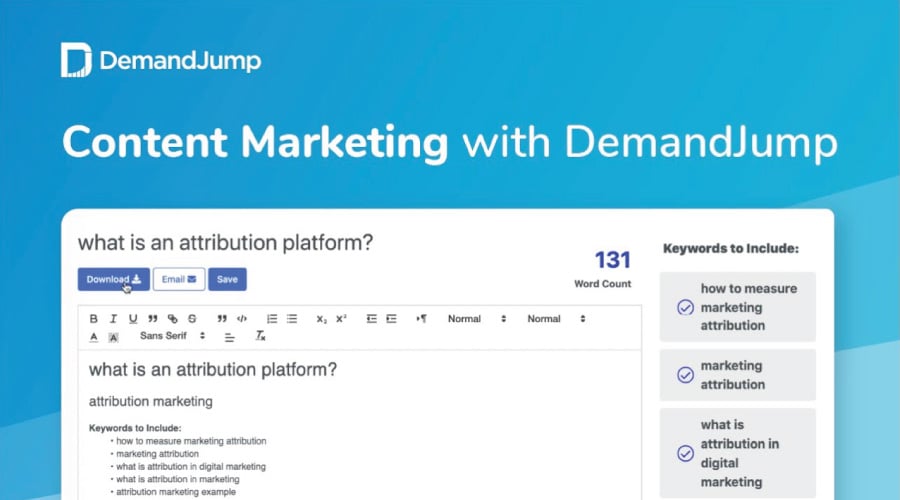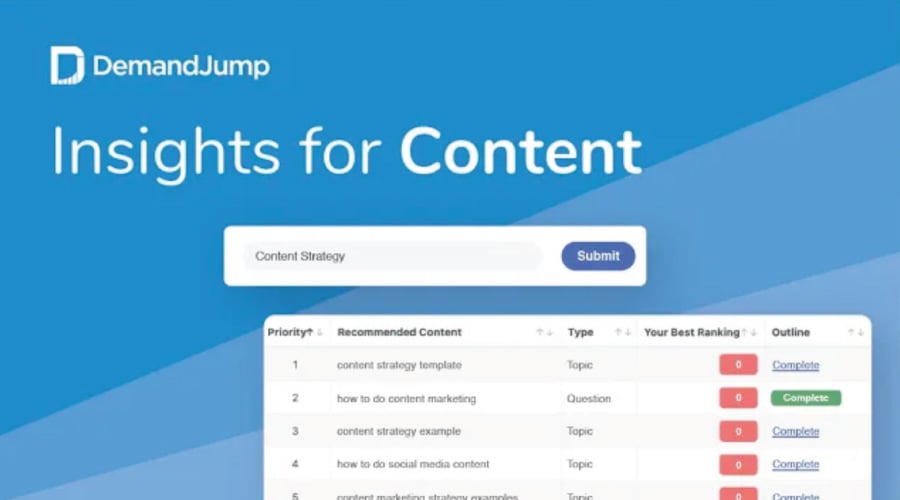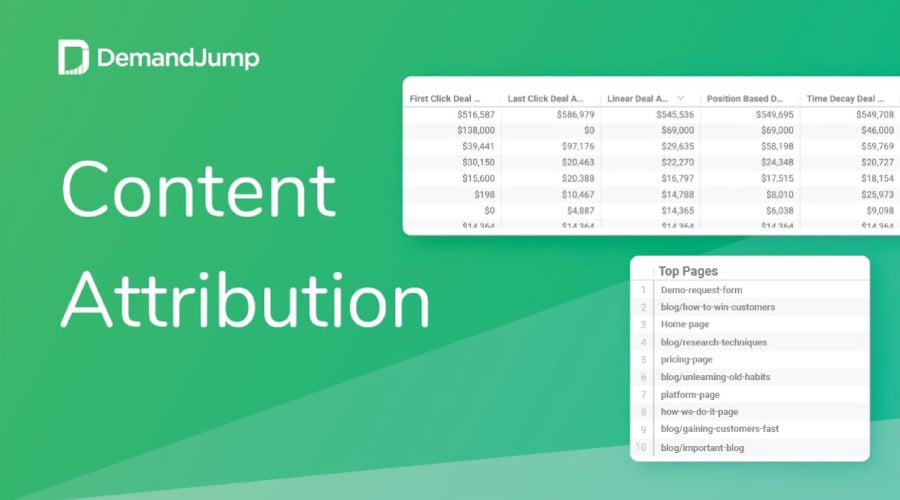Are you tired of feeling like your website is the wallflower at the SERP prom? You’ll be happy to know that achieving higher search engine page rankings is not a far-fetched fantasy, but a feasible reality—with the right SEO strategy.
Of course, you'll have to battle fierce competition, navigate the ever-changing algorithms, and know exactly what your audience is searching for. But fear not, because with the right SEO tools and tactics, you'll be pulling in conversions faster than even the most well-executed email campaign.
So, let’s learn what it takes to climb search engine rankings in less than six months. First, we’ll review the four main components of an SEO business plan, and then we’ll jump into how to create an SEO strategy. By following this SEO strategy in your digital marketing efforts, you’ll pull your website from wallflower status to belle of the ball in no time.
What Are the 4 Main Components of an SEO Plan?
Before diving into our curated 6-month SEO strategy template, you must first understand the four components of SEO—on-page, off-page, technical, and local. If you’re already familiar with these four pieces of the SEO puzzle, skip ahead to the next section!
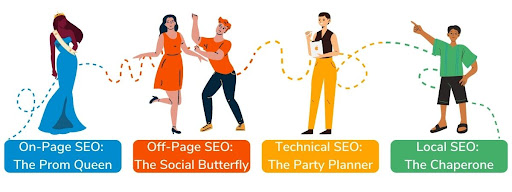
1. On-Page SEO: The Prom Queen
On-page SEO is like the prom queen, as it's the central focus for most SEO experts. Just as prom royalty needs to carefully select their outfit, accessories, and hairstyle to impress their peers, on-page SEO requires careful attention to keywords, titles, meta descriptions, headings, images, internal links, and other elements. All these are essential to make your website attractive to both search engines and users.
On-page SEO also emphasizes the importance of content quality. A website with well-crafted, informative, and interesting content will rank higher on search engines compared to a site with low-quality or irrelevant content. For those wanting an SEO plan template for a new website, specifically, content creation is the first place you should start, as a barebones website will definitely not rank.
We’ll show you how to create and enhance your website content using an SEO strategy platform like DemandJump in our monthly SEO plan down below.
2. Off-Page SEO: The Social Butterfly
To build your online authority, you have to build relationships and establish a reputation beyond the walls of your website. Enter off-page SEO: the social butterfly who knows how to work the room and make connections. Similar to this kind of networking, you want to:
- Be seen with the right crowd (by linking to high domain authority websites)
- Drop your name in conversations (by building links to your website from other sites)
- Let everyone know you're a top-notch guest (by maintaining an active social media presence)
- Bring the good stuff to the potluck (by producing interesting and shareable content)
- Be the life of the party (by finding ways to guest blog and get your name out there)
Remember, it's not about collecting as many contacts as possible, but about building meaningful relationships with the right people.
3. Technical SEO: The Party Planner
Think of technical SEO as the party planner who makes sure everything runs smoothly behind the scenes, allowing guests to have a great time without any hiccups. To be a true backend SEO expert, you need to be proficient with technical jargon, like HTML, CSS, and JavaScript, to ensure speedy loading times and easy navigation. You'll also need to troubleshoot errors like 404 pages, broken links, redirect chains, slow loading times, and so much more.
And of course, don’t forget schema markup. Schema markup is a coding language that search engines use to comprehend the content on your website and serve it up to users in the best possible way. For instance, if you manage an eCommerce website, schema markup can inform search engines about your products’ names, prices, ratings, images, and other relevant data. By implementing schema markup, your eCommerce products can appear on the coveted Shopping tab of Google, complete with all the crucial details that will entice potential buyers to click that "add to cart" button.
Although technical SEO is an essential aspect of a successful website, not everyone has the necessary skills or resources to handle it independently. Just like planning a big event, sometimes you need outside help to make sure everything goes smoothly. Hiring a technical SEO expert or agency can help you navigate the complex world of backend optimization and ensure your website is running at peak performance.
4. Local SEO: The Chaperone
Local SEO is like the chaperone at a prom who ensures everyone is in the right place at the right time. Just as the chaperone helps guide students to the dance floor or the refreshments table, local SEO practices help guide potential customers to your business's physical location. If you run a brick-and-mortar store or provide services to a specific area, then you need local SEO.
The foundation of local SEO is updating your website and Google Business Profile with relevant information like your phone number, address, hours of operation, and customer reviews. This data will help your business show up in local search results, making it straightforward for customers to find you and navigate to your location.
What Does an SEO Plan Include? A 6-Month Breakdown
Put on your SEO hat and grab your favorite caffeinated beverage because we’re diving head-first into our 6-month SEO plan. PDF it for your own internal use, if you’d like!
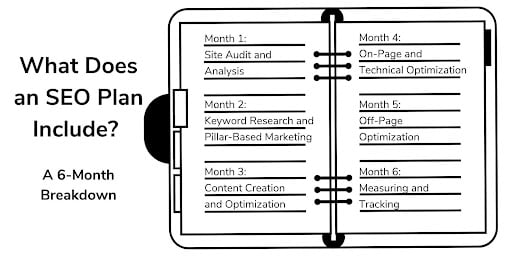
Month 1: Site Audit and Analysis
To kick off any basic SEO strategy, start with gauging the current state of your website. Follow this checklist for a thorough site audit and analysis:
- Run a website audit to identify technical issues, broken links, and indexing errors.
- Check your website speed and performance—anything under a three-second load time is usually good.
- Analyze your website's on-page optimization, including meta titles and descriptions, header tags, keyword usage, and content quality.
- Review your website's user experience, including mobile-friendliness, navigation, and ease of use.
- Prioritize the technical issues you've identified and start fixing them, such as broken links, duplicate content, or missing alt tags.
- Check your Google Business Profile and other commonly used online business directories to ensure that your business contact information is up-to-date and verified.
By the end of the first month, you'll have a better understanding of your website's strengths and weaknesses and a clear plan for fixing any technical issues that may hinder your ranking.
Month 2: Keyword Research and Pillar-Based Marketing
Once you have a website free of technical issues, it's time to identify the keywords you want to rank for and use Pillar-Based Marketing (PBM) best practices. Think of month two as the preliminary setup for content creation, which will really start taking off in month three. To prepare for content creation, you should:
- Use the DemandJump platform to research relevant keywords and phrases for your business.
- Check out your competitors and see what they're ranking for with the help of DemandJump’s competitor analysis tools.
- Utilize DemandJump’s curated lists of keywords and phrases you want to target, grouped by relevance and intent.
- Create a PBM content strategy for SEO that focuses on an overarching keyword for the Pillar pages and more specific, long-tail keywords for Sub-Pillars and Supporting Blogs (learn more about the ins and outs of Pillar-Based Marketing here).
Month 3: Content Creation and Optimization
Now that you have your keywords and Pillar strategy, it's time to create or enhance your content. Here’s how to get started:
- Write engaging content that provides value to your users and aligns with your business objectives.
- Incorporate multimedia such as images, videos, and infographics to make your content more interesting.
- Optimize your content for search engines through the use of header tags, meta descriptions, alt tags, and internal linking.
- Add strong calls-to-action (CTAs) like “schedule a demo” or “try it for free!” to encourage conversions.
Month 4: On-Page and Technical Optimization
You should have a solid amount of content ready to go by month four, but you're not done yet. As you publish your content, make sure your pages are refined for both search engines and users by following these steps:
- Optimize your meta descriptions and page titles with targeted keywords and compelling copy.
- Organize your content with header tags (H1, H2, H3, etc.) to enhance readability for users and improve search engine comprehension.
- Improve your website's loading speed by reducing redirects and minifying CSS and JavaScript files.
- Ensure that all images and multimedia on your site are properly optimized with descriptive filenames, alt tags, and captions.
- Make sure your website runs smoothly on smartphones and other Internet of Things (IoT) devices.
- Implement schema markup to help search engines better understand your content and display featured snippets in search results.
Month 5: Off-Page Optimization
Once your website is full of good content and running smoothly, it’s time to focus on off-page SEO. Here are a few ways you can build relationships, gain backlinks, and boost your website's authority:
- Start building relationships with other websites by reaching out to them and collaborating on content.
- Guest blog on other websites to get your name out there and gain backlinks.
- Create a vibrant and interactive social media profile that showcases your knowledge and allows you to engage with your followers.
- Monitor your competitors and analyze their sources of backlinks—they could be a great opportunity for you too!
- Look for chances to participate in online communities and forums related to your niche to showcase your knowledge and build credibility.
Remember, off-page optimization isn't a one-and-done deal—keep working at it to see the best results!
Month 6: Measuring and Tracking
As you wrap up this short-term SEO plan, it's essential to measure and track your progress. Here are some action items to assist you with monitoring your website's success:
- Set up web analytics services to track your website's traffic and user behavior.
- Use DemandJump data to analyze current keyword and content rankings, identify new areas for creation, and strengthen existing content.
- Note the pages that are ranking well and optimize them for even better results.
- Regularly review your website's performance to ensure that your SEO efforts continue to pay off.
Congratulations! Now you’re a seasoned SEO pro. Moving forward, you must continue to evolve your strategy and adapt to new trends to stay ahead of the game.
SEO Marketing Strategy Examples That Prove You Don't Need Magic to Rank
If you’re still looking for some SEO inspiration, check out this example of a company that blew everyone else out of the water with their results.
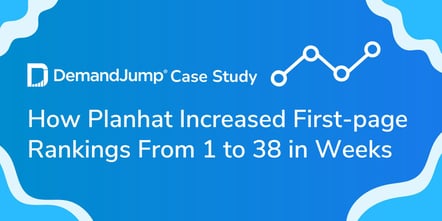
Planhat is a platform that thousands of software companies use to solve customer experience challenges. When they came to DemandJump with their SEO goals, we knew Pillar-Based Marketing was the solution. Together, we identified "Customer Success Analytics" and "Net Revenue Retention" as the two critical topics to rank for, which align perfectly with Planhat's offerings and what their customers are searching for.
The DemandJump team analyzed the search volume potential for these topics and noticed a gap between the keywords Planhat was ranking for and the entire network of relevant keywords available. To bridge that gap, DemandJump developed a comprehensive 16-piece pillar strategy for Planhat that contained the typical PBM content of a Pillar page, Sub-Pillars, and Supporting Blogs.
Planhat saw significant results after publishing this content. They went from having 37 to 283 rankings for the top 100 keywords related to "Net Revenue Retention" and boosted their first-page rankings from one to a peak of 38.
How Do I Create an SEO Strategy With DemandJump?
If you’ve been stuck on questions like “Why is my website not getting traffic?” or “Why does SEO take so long to work?” then you need DemandJump. SEO is far from easy, especially when you don't have the time or resources to invest in such an intensive project. But with DemandJump in your corner, you'll see more SEO rankings without all the blood, sweat, and tears (well, maybe just a little sweat if we're honest, but the results are worth the effort).
To get started, try our platform out for free so you can see how it all works. Explore topics that your audience is searching for, map networks of content, and become a topical authority in months—maybe even weeks!






